


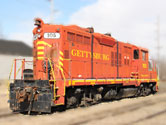






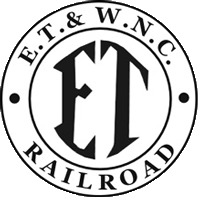 |
East Tennessee &
|

collection

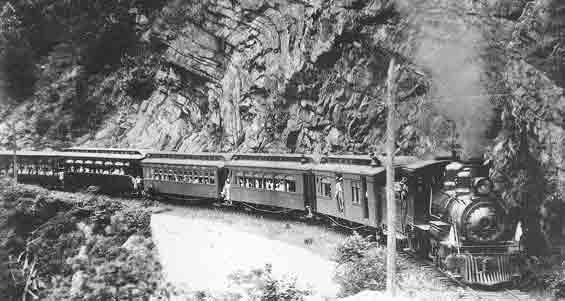 The story of the East Tennessee & Western North Carolina Railroad actually begins when our country was formed. Reuben White bought a plot of land from the State of North Carolina in 1790 that held an outcropping of iron ore that would come to be known as the Cranberry Iron Ore Belt. Others bought land around White as the news of the discovery got out. Legend has it that the Perkins Brothers discovered the iron ore vein but they did not come along until 30 years later. They did end up operating a forge at Cranberry, earning bounty lands from the State for encouraging iron production. The Cranberry Forge did provide iron for the Confederacy, but its remote location limited its contribution.
The story of the East Tennessee & Western North Carolina Railroad actually begins when our country was formed. Reuben White bought a plot of land from the State of North Carolina in 1790 that held an outcropping of iron ore that would come to be known as the Cranberry Iron Ore Belt. Others bought land around White as the news of the discovery got out. Legend has it that the Perkins Brothers discovered the iron ore vein but they did not come along until 30 years later. They did end up operating a forge at Cranberry, earning bounty lands from the State for encouraging iron production. The Cranberry Forge did provide iron for the Confederacy, but its remote location limited its contribution.
After the war, the 5' gauge ET&WNC was chartered to connect the mine with the growing railroad network. After some construction the work stopped due to some shady financial dealings and some funds that turned up missing. After years of investigations and a foreclosure sale, the mine property and the railroad ended up in the hands of the Cranberry Iron & Coal Company, which was controlled by northern investors. The railroad was finished as a 3' narrow gauge line, and opened for business in July 1882, connecting Johnson City, TN and Cranberry, NC. It passed through the rugged Doe River Gorge, where cliffs start at the river and rise vertically for hundreds of feet.
A Short History of the ET&WNC Railroad - Johnny Graybeal

 he East Tennessee & Western North Carolina Railroad at one time operated both standard and 3 foot gauge trackage between Johnson City, Tennessee, across the state line as far as Cranberry, North Carolina. The narrow gauge line hauled various raw materials and offered mixed train service into the 1930s.
Despite national attention as a steam tourist hauler in its later years, the narrow gauge operation was abandoned in October of 1950 due to lack of freight business. A core collection of narrow gauge equipment survives today at the Tweetsie Railroad theme park. However, the standard gauge portion of the railroad -- between Johnson City and Elizabethton -- continued to operate profitably as the ET&WNC until 1983.
In 1983, the line was reorganized as the East Tennessee Railway, now owned and operated by the Genesee & Wyoming shortline operator. Eventually, the remaining industries the railroad served in Elizabethton closed down, and the railroad made its last run to Elizabethton in 2005. Those rails sat for several years before being taken up, with the right-of-way becoming the Tweetsie Trail hiking path.
he East Tennessee & Western North Carolina Railroad at one time operated both standard and 3 foot gauge trackage between Johnson City, Tennessee, across the state line as far as Cranberry, North Carolina. The narrow gauge line hauled various raw materials and offered mixed train service into the 1930s.
Despite national attention as a steam tourist hauler in its later years, the narrow gauge operation was abandoned in October of 1950 due to lack of freight business. A core collection of narrow gauge equipment survives today at the Tweetsie Railroad theme park. However, the standard gauge portion of the railroad -- between Johnson City and Elizabethton -- continued to operate profitably as the ET&WNC until 1983.
In 1983, the line was reorganized as the East Tennessee Railway, now owned and operated by the Genesee & Wyoming shortline operator. Eventually, the remaining industries the railroad served in Elizabethton closed down, and the railroad made its last run to Elizabethton in 2005. Those rails sat for several years before being taken up, with the right-of-way becoming the Tweetsie Trail hiking path.
In the early 1950s, the East Tennessee & Western North Carolina purchased from the Southern Railway a pair of used Alco Richmond-built 2-8-0 steamers for its freight service. But in 1968, the shortline traded the steamers back to the Southern for two ALCO RS-3 road units. The Southern placed the two Consolidations into excursion passenger service, and both locomotives survive today.

See also our Southern Railway steam excursion program scrapbook in Steam
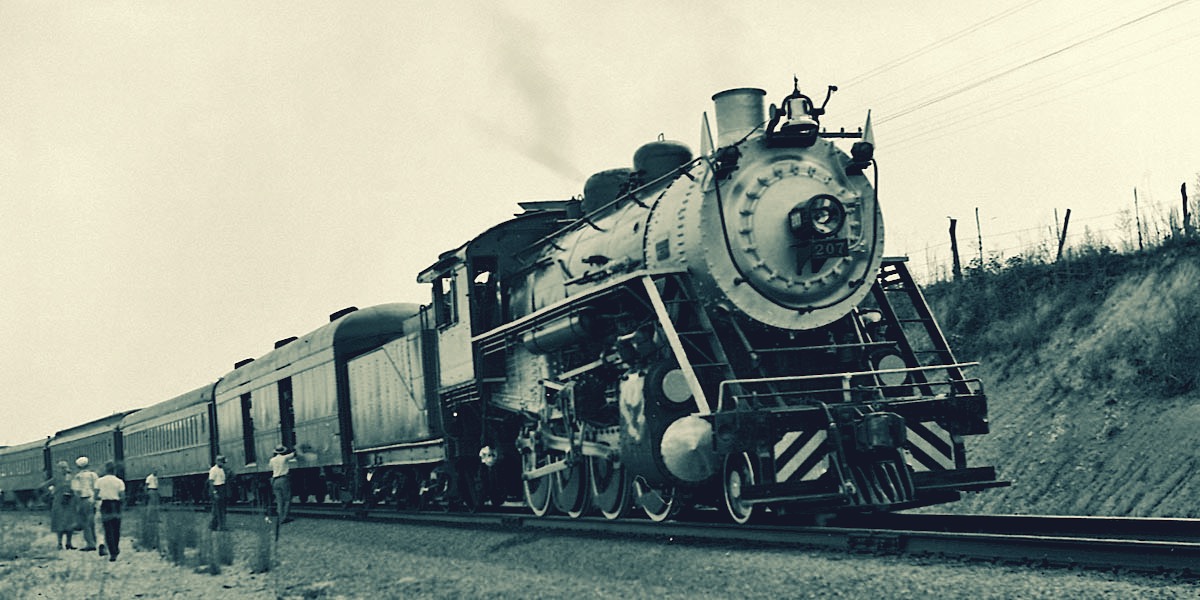
Kingsport, Tn / Sep 1960 / JCH
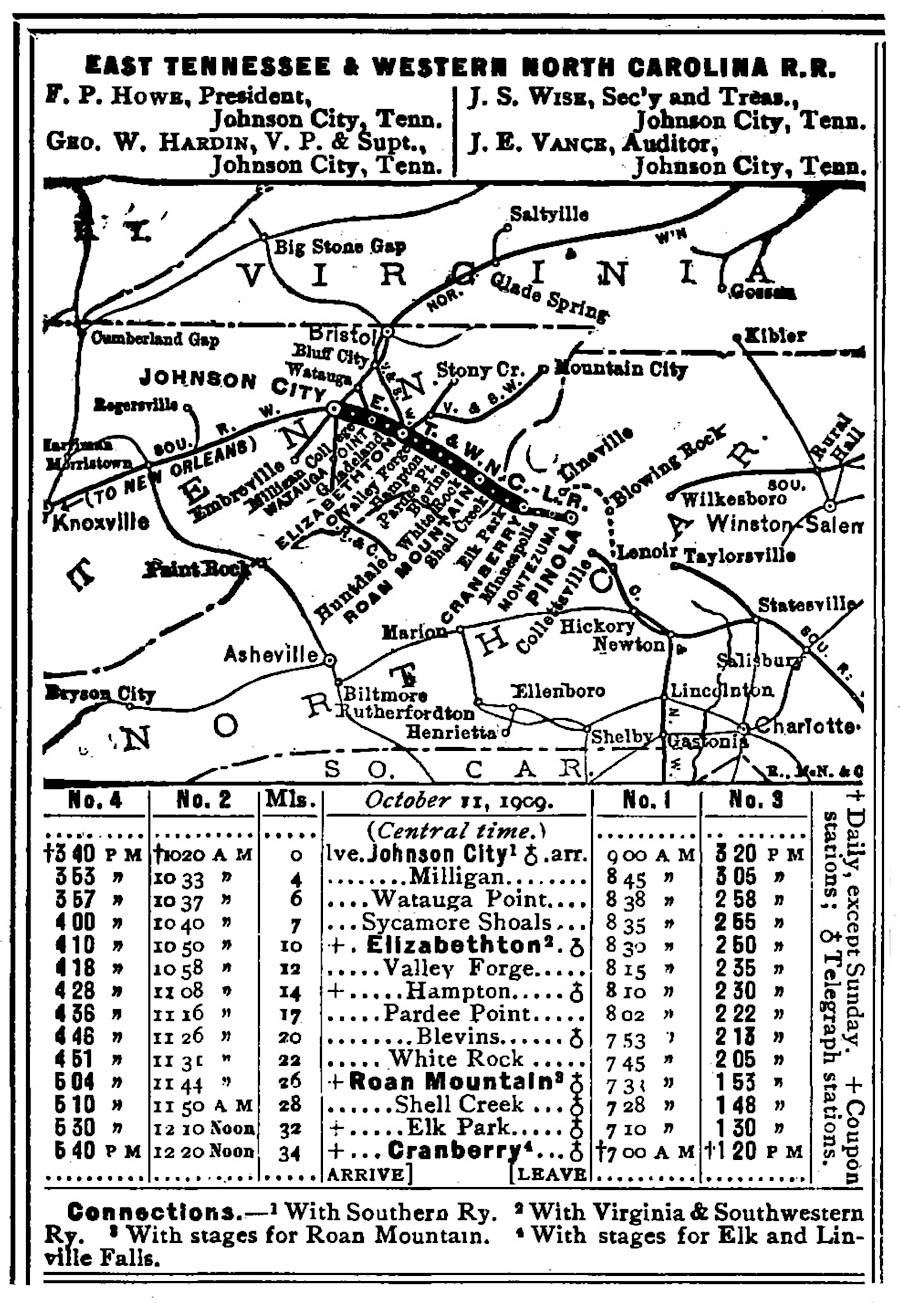
1910 Official Guide ad / collection
Motive Power
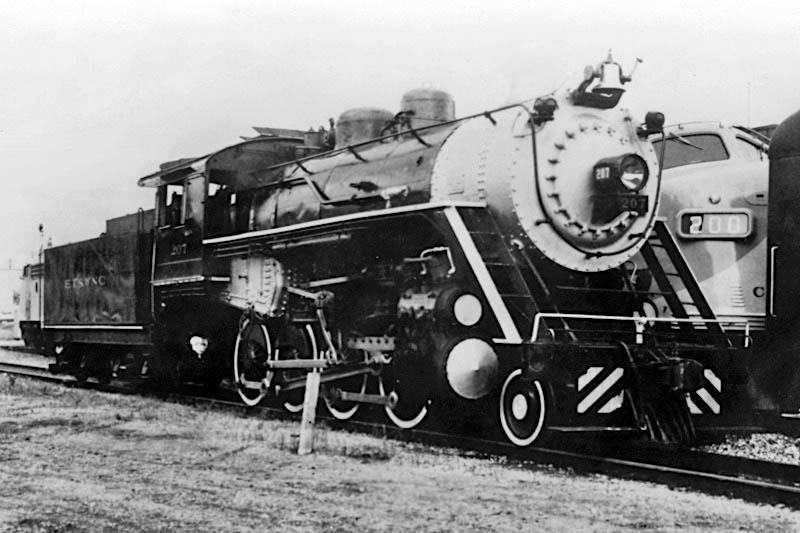
East Tennessee & Western North Carolina #207
Johnson City, Tn / collection


East Tennessee & Western North Carolina #207
to East Tenn & W N Carolina #207, 1952
to Southern Railway #630, 1968
to Tennessee Valley Railway Museum
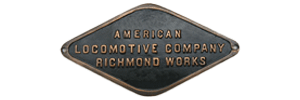

Kingsport, Tn / Sep 1960 / JCH
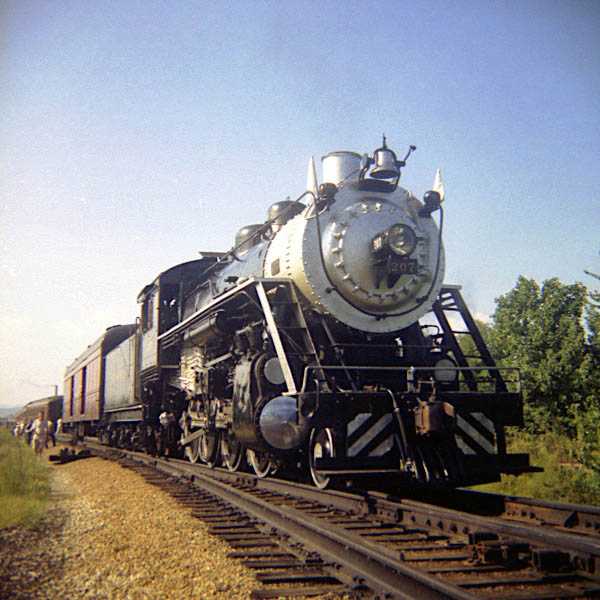
Kingsport, Tn / Sep 1960 / JCH

I shot the pictures of East Tennessee & Western North Carolina #207 shown here during the 1960 National Railway Historical Society convention in Bristol, Tennessee. #207 left its shortline rails to pull an excusion consist on the nearby Clinchfield Railroad. This trip was still eight years prior to the sale of #207 back to the Southern, at which point she became Southern #630 again. Although I was taking 120 black & white photos in those days, I did take one color photo of #207 with my small 127 camera.
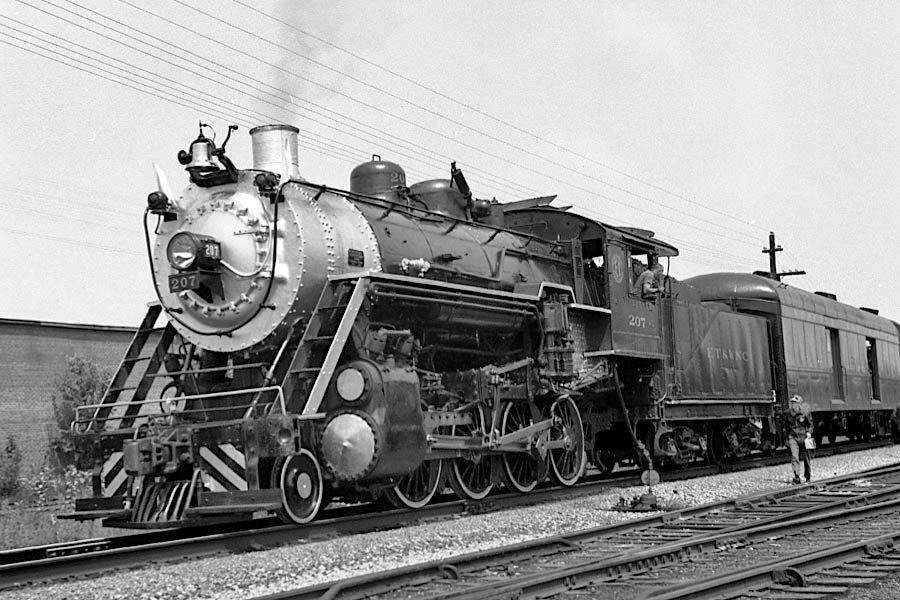
Johnson City, Tn / Sep 1960 / JCH
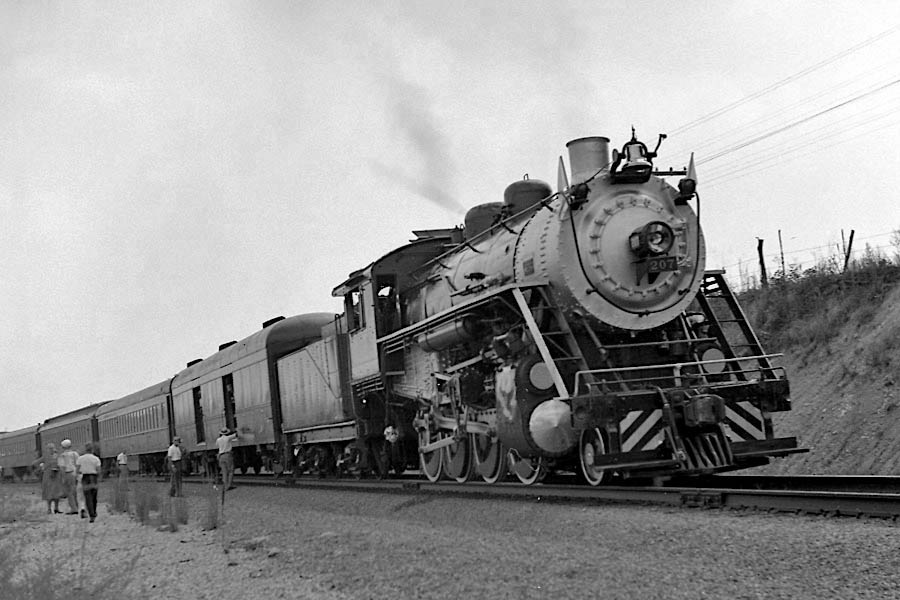
Johnson City, Tn / Sep 1960 / JCH

See also our complete Southern Railway #630 scrapbook in Steam
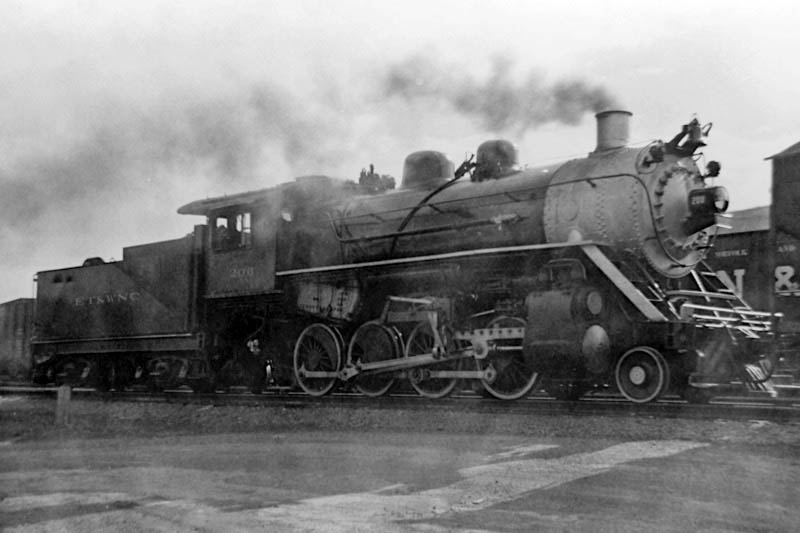
East Tennessee & Western North Carolina #208
Johnson City, Tn / Dec 1956 / collection


East Tennessee & Western North Carolina #208
to East Tenn & W N Carolina #208, 1952
to Southern Railway #722, 1968
to Tennessee Valley Railway Museum
on display in Asheville, NC
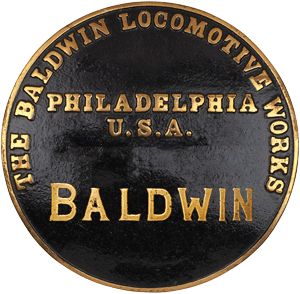
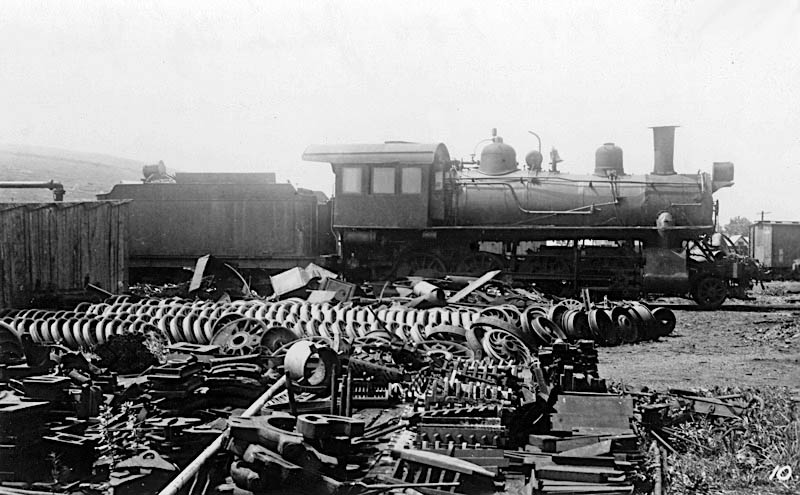
East Tennessee & Western North Carolina #828
Johnson City, Tn / Jun 1932 / collection


East Tennessee & Western North Carolina #828
to East Tenn & W N Carolina #828
purchased 1927, scrapped 1937

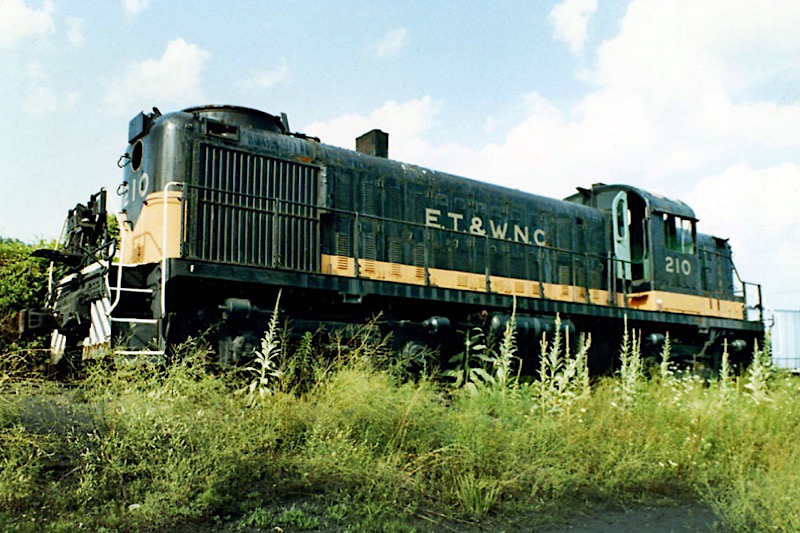
East Tennessee & Western North Carolina #210
Elizabethton, Tn / Jul 1987 / Robert Proctor


East Tennessee & Western North Carolina #210
to Southern Railway #109
to East Tenn & W N Carolina #210
to Tennessee Valley Railway Museum


The standard gauge section between Johnson City and Elizabethton continued to thrive for another half century. Two ex-Southern locomotives kept steam alive in Tennessee until replaced by diesels in 1967. Southern Railway traded two Alco RS-3s for the steamers, now badly wanted for excursion train service. The increasingly rare Alcos kept rail fans coming to see the railroad for another 20 years, until replaced by even more rare RS-32s. The East Tennessee & Western North Carolina became the East Tennessee Railway in 1985.
A Short History of the ET&WNC Railroad - Johnny Graybeal
 Locations
Locations

from Johnson City Area History 1790-2012
- Alan Birdwell
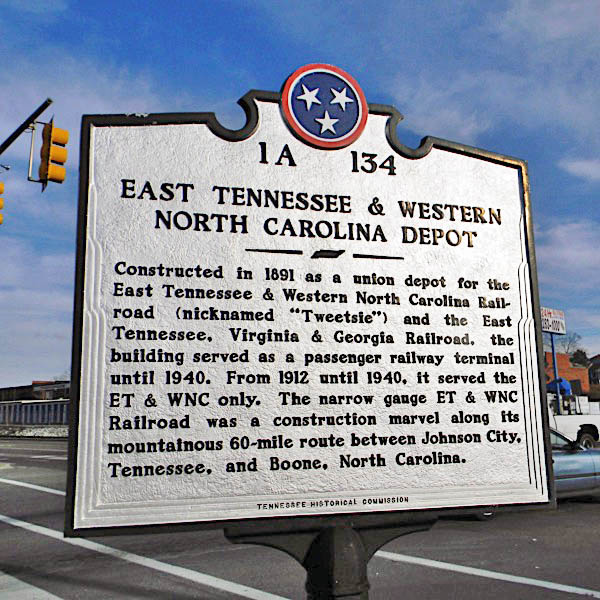
RWH

 The City of Johnson City was founded on Dec. 1, 1869 in Northeast Tennessee, where three railroads — the East Tennessee and Western North Carolina, the Clinchfield, and the Southern Railway — converged.
The City of Johnson City was founded on Dec. 1, 1869 in Northeast Tennessee, where three railroads — the East Tennessee and Western North Carolina, the Clinchfield, and the Southern Railway — converged.

Johnson City Union Station
Johnson City, Tn / circa 1900 / web
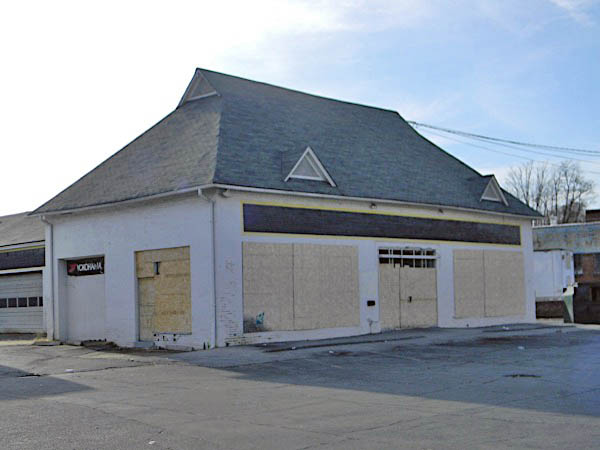
Johnson City, Tn / Nov 2011 / RWH

Click to see this station area plotted on a Google Maps page

Johnson City, Tn / Nov 2011 / RWH

Johnson City, Tn / Nov 2011 / RWH

Johnson City, Tn / Nov 2011 / RWH

Johnson City, Tn / Nov 2011 / RWH
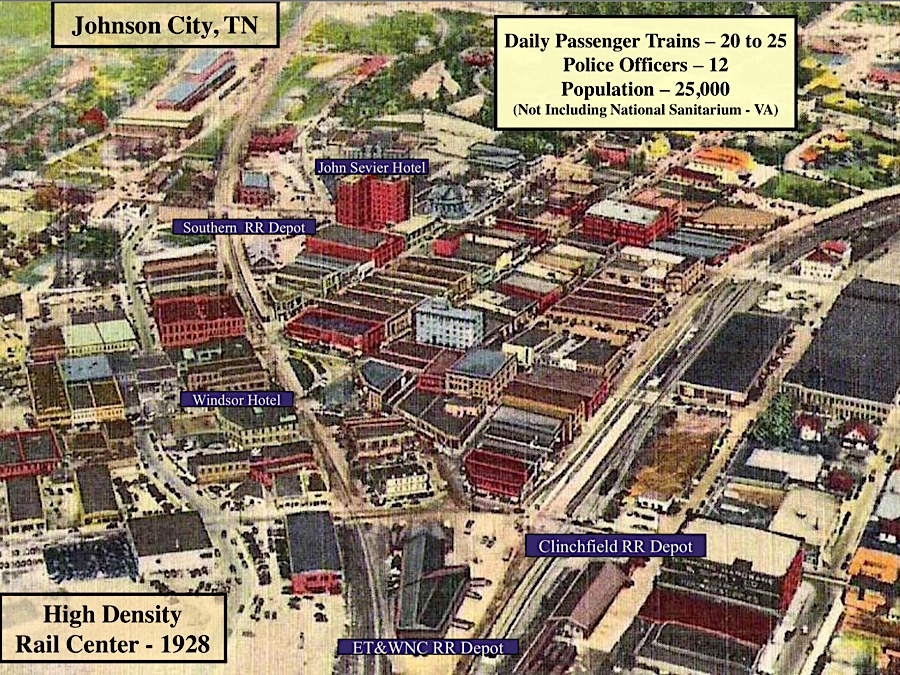
from Johnson City Area History 1790-2012
- Alan Birdwell

ETWN shop area overhead / Gooele Maps
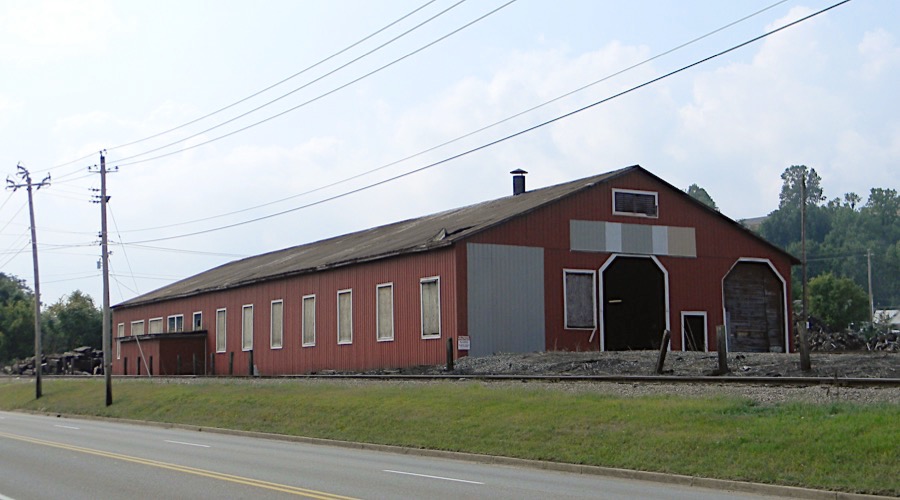
East Tennessee & Western North Carolina shop
Johnson City, Tn / Jul 2011 / RWH
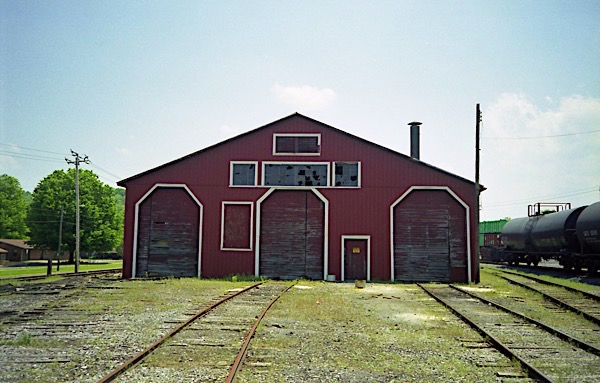
Johnson City, Tn / Jul 2011 / RWH
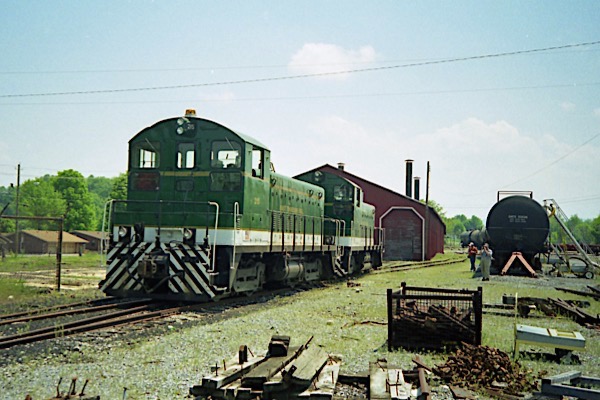
Johnson City, Tn / Jul 2011 / RWH

See also our East Tennessee Railway scrapbook in Shortlines
Publications
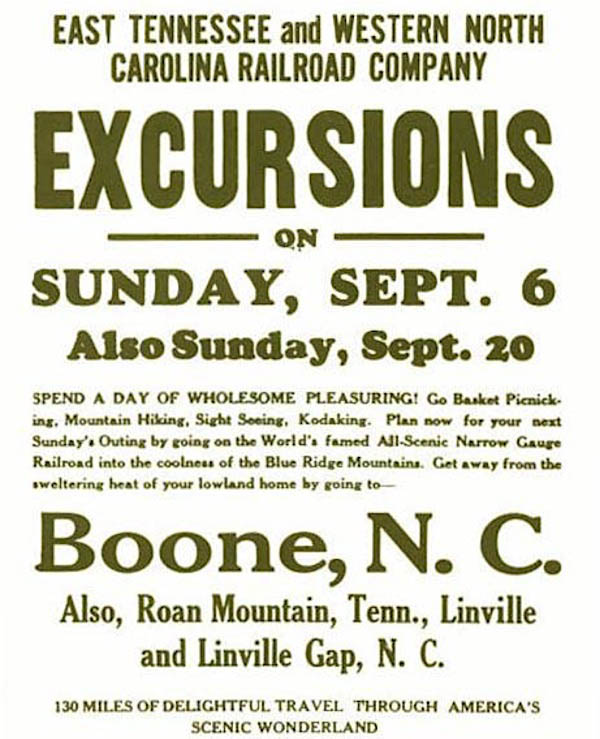
web

1910 Official Guide ad / collection
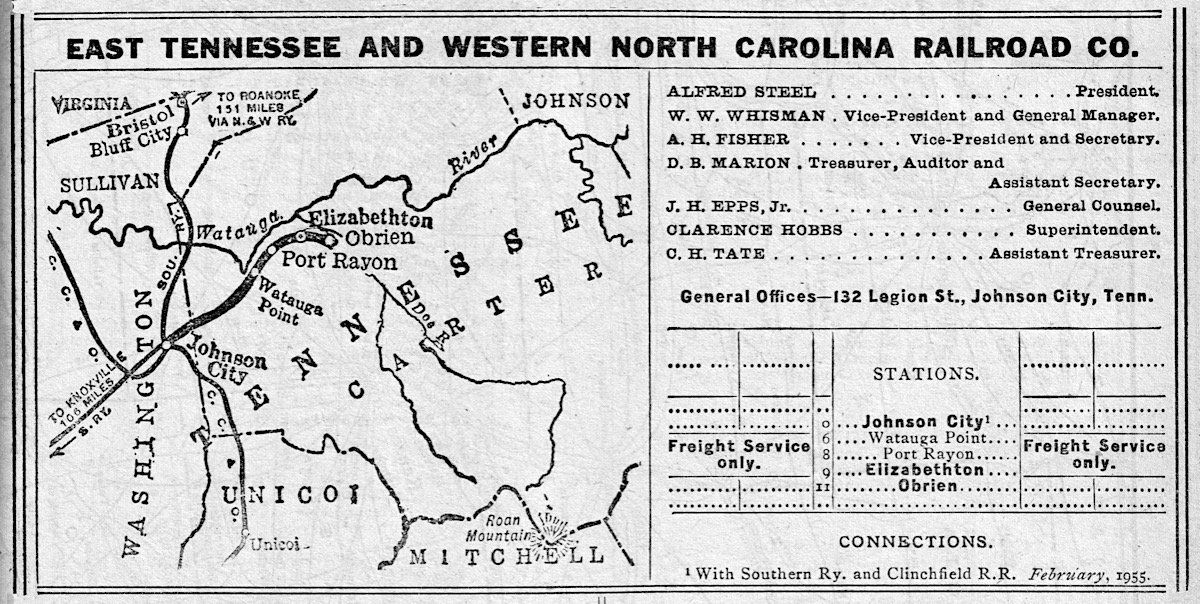
1955 Official Guide ad / collection
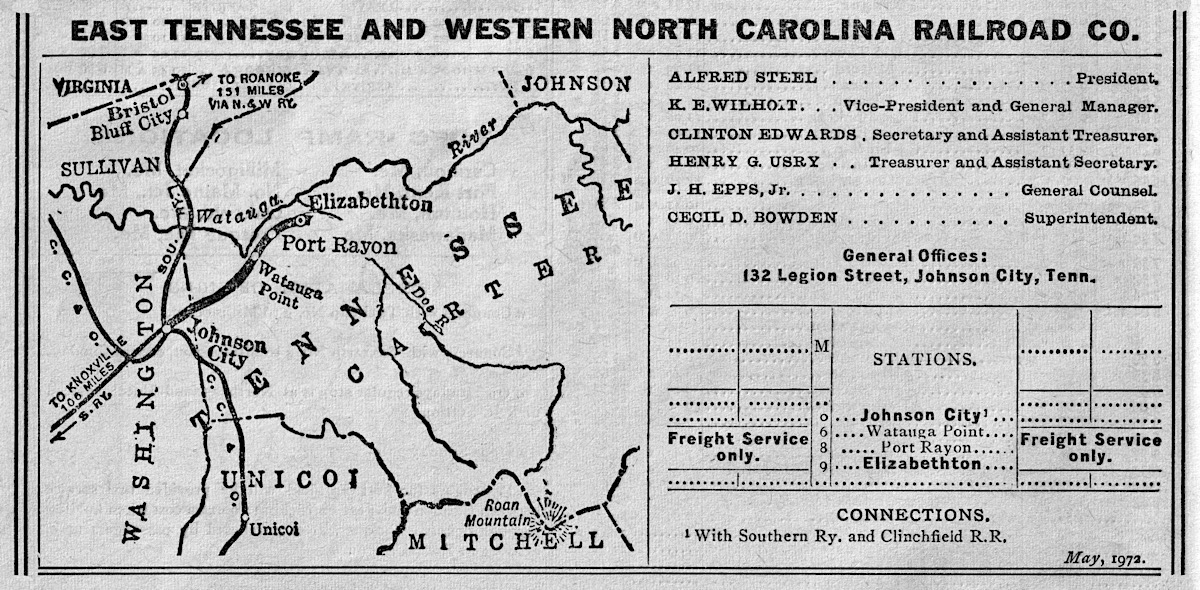
1972 Official Guide ad / collection

1982 Official Guide ad / collection
 Lagniappe
Lagniappe

Those are great shots of Southern #630. Now, a little trivia. Back in the 1960s, East Tennessee & Western North Carolina's general manager, a steam man, retired. The owners were looking for a steam man to replace him. Well, they found Cecil Bowden, an under-age Navy Seal during WWII. Back as a civilian, Cecil got a job in the Live Oak Perry & Gulf and Brooks-Scanlon shops at Foley, Fla. He was there when I started with the LOP&G in 1951. Even before Southern took over in 1954, the LOP&G's president was trying to wrest the LOP&G locomotives from Brooks-Scanlon maintenance. Basically he set up a shade tree shop in Perry and promoted Cecil as Master Mechanic somewhere about 1954-1955. Cecil had worked with steam, even ran them from time to time from 1946 until 1954 when Southern scrapped all the steam locomotives.
When Cecil got to the ET&WNC, he already knew Southern's mechanical bosses at Pegram Shops in Atlanta. He wasted no time in makng the swap. Of course, it was fortuitous because Southern was looking for the 630 back. Southern gave Cecil his pick of two Central of Georgia Alco RS-3s in exchange for the two ET&WNC steam locomotives. That didn't set well with ET&WNC engineers and shopmen, because of the TITWAD principle (This is the way we always did it). However, I expect that soon the engineers didn't know it could be so good as running diesels.
At Perry, on the LOP&G during those early days when Cecil was Master Mechanic, I was agent and Cecil had a desk in the station office, along with me. I was on the track side, and he was on the street side. Cecil could cuss a blue streak, as the saying goes. I didn't like it because it was foreign to me. However, we were friends and I tolerated it. Whether my not responding in kind had any influence on him, I will probably never know.
He was a good mechanical man. Once he and a local diesel mechanic, who the LOP&G had hired as road foreman of engines of the LOP&G, tore down one of the 70-tonners to the base frame, and built it back with new parts, all under a shade tree.
After Earl Durden's Rail Management Company bought the ET&WNC, Cecil became the diesel guru for all of Earl's railroads. Later on, Earl made him general manger of the Georgia Central which had all GE locomotives. I visited with him in Vidalia about 1996-97. I learned later that Cecil had affiliated with the Methodist Church in Vidalia, I assume, but I never saw him again. When Earl Durden sold to Genessee & Wyoming they let Cecil go and he died at 79 less than a year later with cancer.
Cecil did a good days work when he got those two Alcos, both for the ET&WNC, and for Southern Railway, and today we still have these wonderful images of No. 630.
Russell Tedder - August 2012 correspondence
 George L. Carter Museum
George L. Carter Museum
Located on the campus of East Tennessee State University in Johnson City, Tennessee, the George L. Carter Railroad Museum features a large narrow gauge HOn3 layout of the venerable East Tennessee & Western North Carolina steam operation, which seeks to recreate in scale scenes and scenery from the railroad's run between Johnson City, Tennessee, and towns in the mountains of western North Carolina.
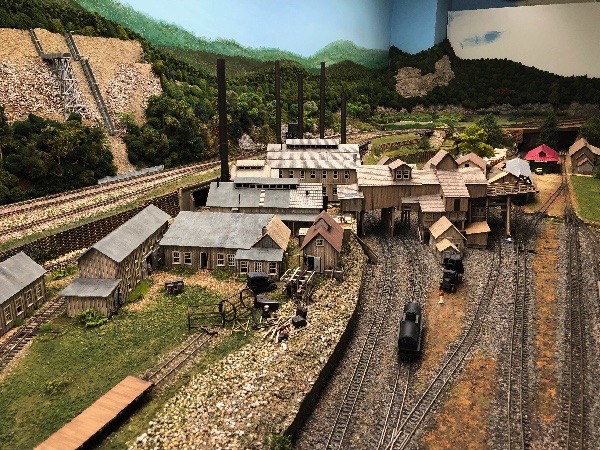

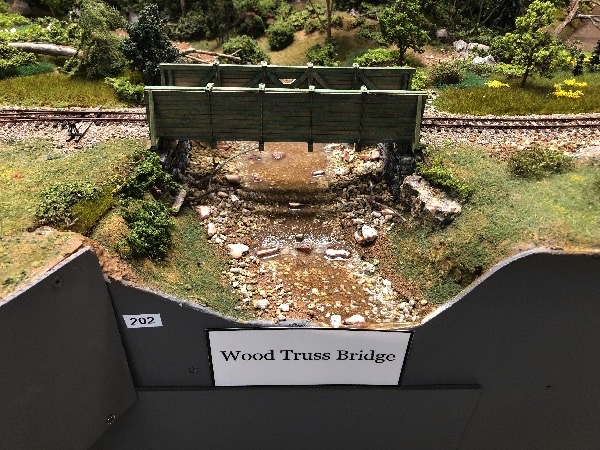
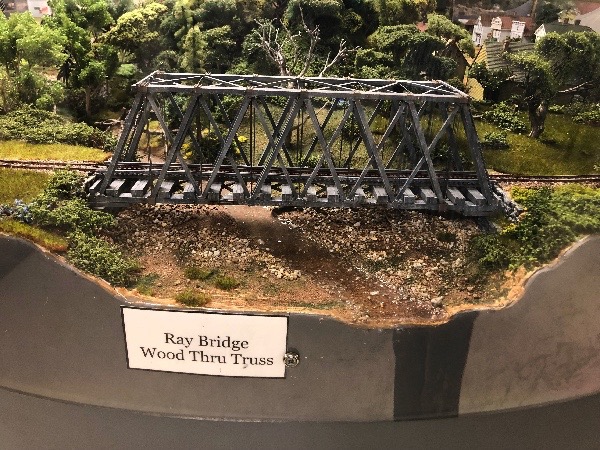
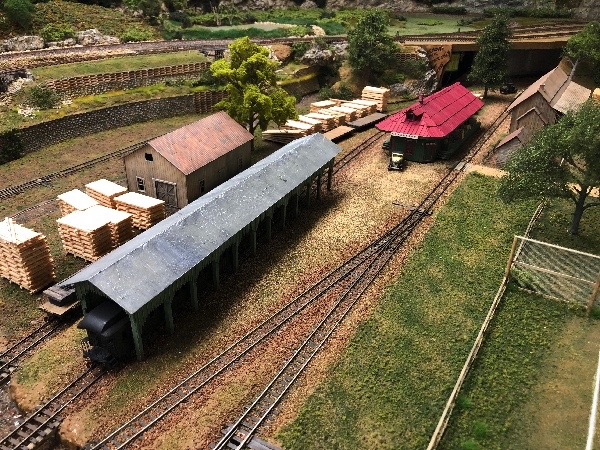
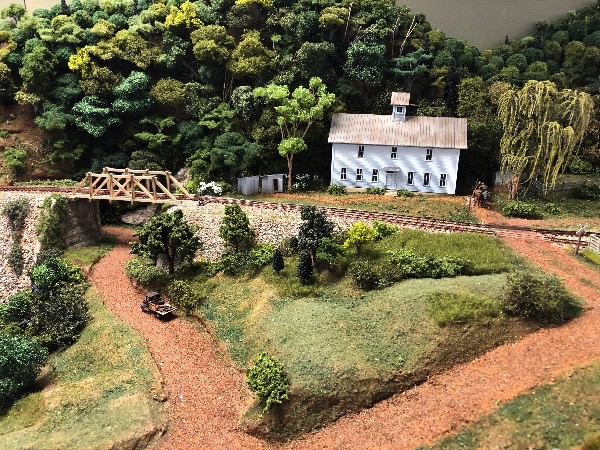

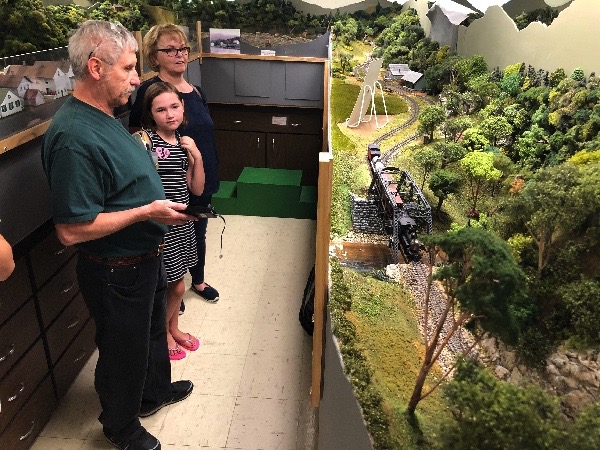
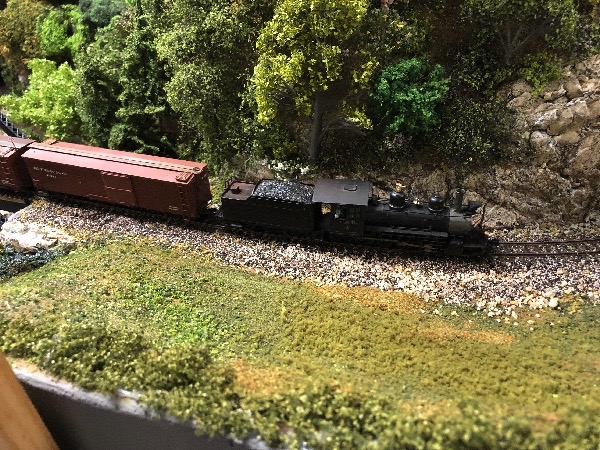
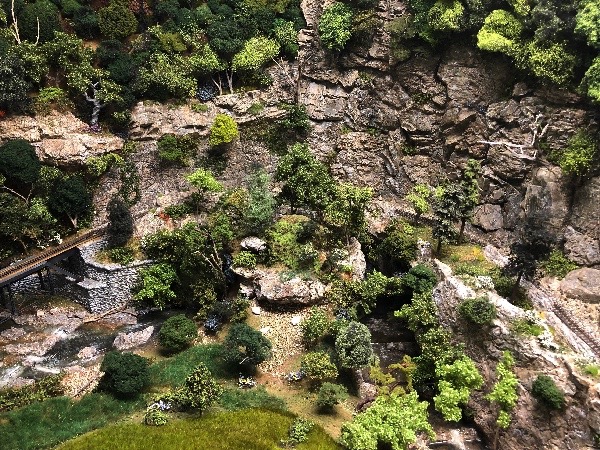
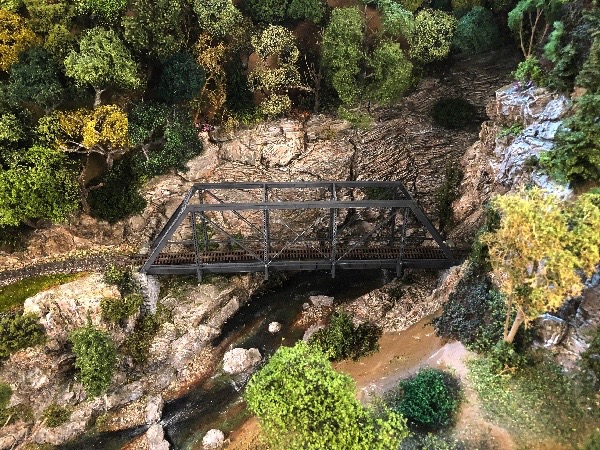

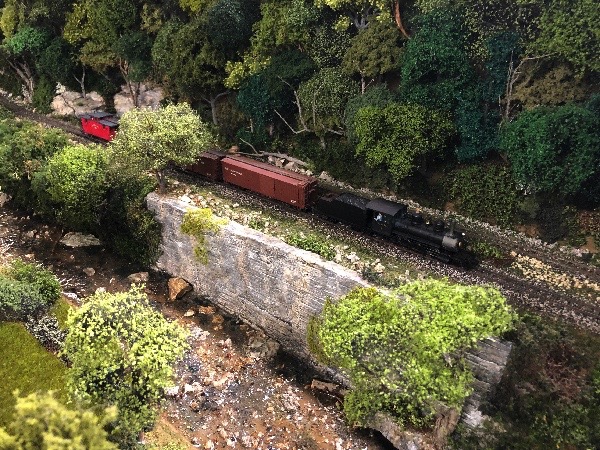

Jun 2019 / RWH

See also our George L. Carter Railroad Museum scrapbook for more photos
Links / Sources
- East Tennessee & Western North Carolina Railroad Historical Society
- Wikipedia article for East Tennessee & Western North Carolina
- Don's Rail Photos East Tennessee & Western North Carolina page
- Charleston Cincinnati & Chicago Railroad and the Railroads of East Tennessee
- Genesee & Wyoming East Tennessee Railway page
- Edward A. Lewis, American Shortline Railway Guide - Fifth Edition (Kalmbach, 1996) 111
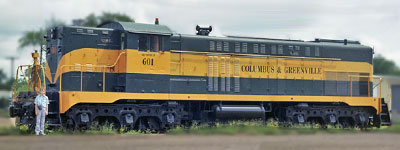
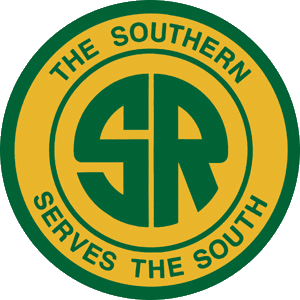
 East Tennessee & Western North Carolina standard gauge locomotive roster
East Tennessee & Western North Carolina standard gauge locomotive roster